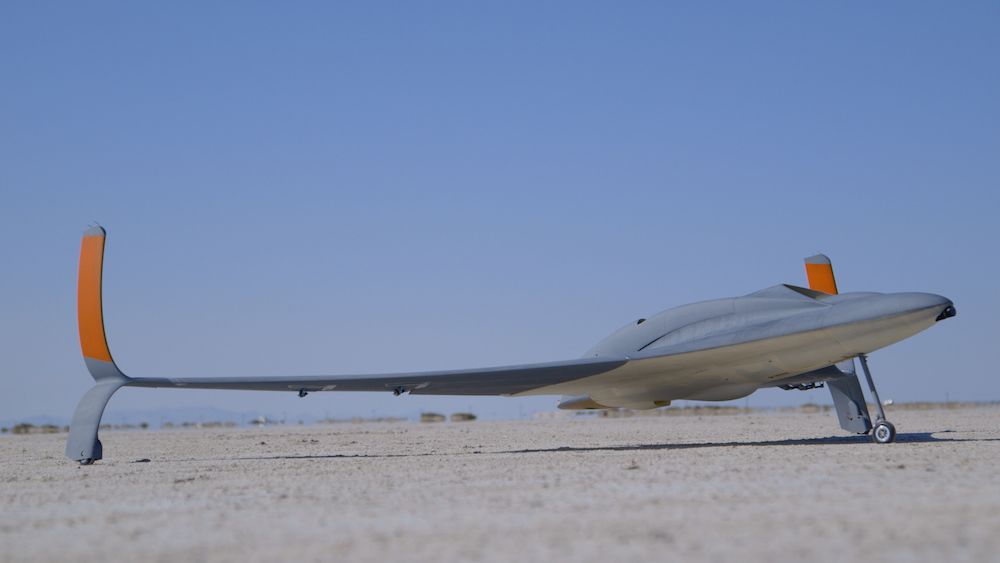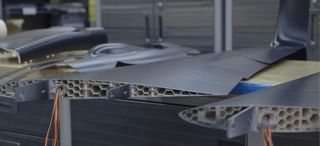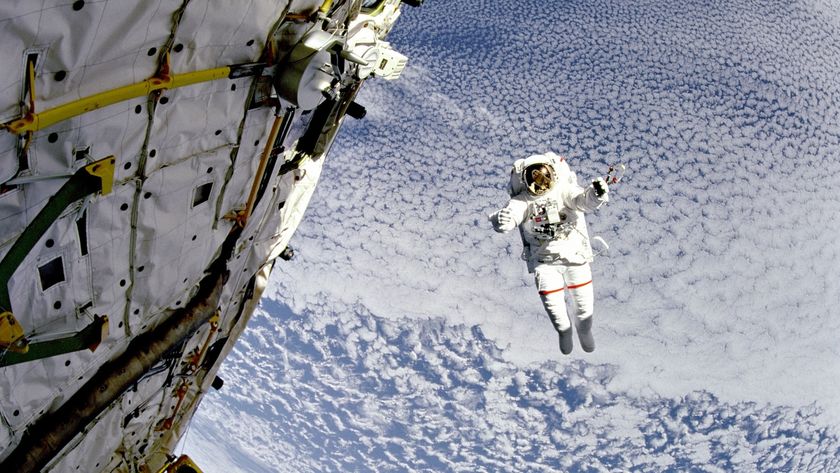Jet-Propelled 3D-Printed Drone Claims Speed Record

A new jet-powered drone might be the most complex flying machine ever built using 3D printing.
The drone, which made its debut at the Dubai Airshow earlier this month, looks nothing like your average 3D-printed toy plane. It has a 9-foot-long (3 meters) wingspan and an aerodynamic design that gives it a futuristic appearance.
But about 80 percent of the sleek, unmanned aerial vehicle (UAV) is designed and manufactured using 3D printing methods, according to Aurora Flight Sciences and Stratasys, the companies that developed the drone. The UAV weighs just 33 lbs. (15 kilograms) and can fly at speeds exceeding 150 mph (241 km/h). [The 10 Weirdest Things Created by 3D Printing]
"To the best of our knowledge, this is the largest, fastest and most complex 3D-printed UAV ever produced," Dan Campbell, aerospace research engineer at Aurora Flight Sciences, said in a statement.

The drone consists of several hollow parts that were produced using a common 3D printing process known as fused deposition modeling (FDM), in which a molten plastic material is extruded, layer by layer, onto a surface to form an object.
"Aurora’s UAV is clear evidence of FDM’s ability to build a completely enclosed, hollow structure which, unlike other manufacturing methods, allows large — yet less dense — objects to be produced," Scott Sevcik, development manager at Stratasys, said in a statement.
Some parts of the aircraft were made using 3D printing methods other than FDM, such as laser sintering, or SLS, a process in which small bits of material are heated up so that they fuse together to form an object. SLS is often used to print small, highly technical parts in metal. Yet, most of the new drone was printed in ultem, a resilient (and flame-resistant) thermoplastic resin.
Sign up for the Live Science daily newsletter now
Get the world’s most fascinating discoveries delivered straight to your inbox.
Overall, 3D printing helped cut in half the time it took to design and build the drone, Sevcik said. And production of the custom plane was cheaper using these methods compared to traditional manufacturing methods, according to Stratasys.
Aurora's plane demonstrates how useful 3D printing can be for printing lightweight aircraft like drones, Sevcik said. And he's not the only one who thinks so. This high-tech manufacturing method has been used to print several other UAVs, as well.
In August, a slightly smaller 3D-printed drone was launched from the deck of a British warship. Developed by engineers at the University of Southampton, in the United Kingdom, the plane has a 4-foot (1.2 m) wingspan, can reach speeds of 60 mph (97 km/h) and is very quiet in the air, making it perfect for stealth military missions. These drones could one day be printed aboard ships on an as-needed basis and then launched into action.
In 2014, a company called Arch Aerial started manufacturing small, 3D-printed drones that run on open-source flight software, making them useful for a variety of applications — from monitoring crops to scanning the landscape for clues at a potential archaeological dig site.
Follow Elizabeth Palermo @techEpalermo. Follow Live Science @livescience, Facebook & Google+. Original article on Live Science.

Elizabeth is a former Live Science associate editor and current director of audience development at the Chamber of Commerce. She graduated with a bachelor of arts degree from George Washington University. Elizabeth has traveled throughout the Americas, studying political systems and indigenous cultures and teaching English to students of all ages.
Most Popular






